News & Opinions about the mirrorless camera market appear below, latest article first. At the bottom of this page you'll find the News/Views Archives, which lets you go back in time to look at articles that have trickled off this page. If you're looking for much older articles, click here for the deeper news archive.
If you want to read an article below without the sidebar and other distractions, just click on its title.
Fifth Time's a Charm. Okay, it's a ILC X100VI
While Fujifilm has developed an extensive lineup of mirrorless cameras, most of their sales have been in a few key models. One of the models that has consistently disappointed has been the X-E# series.
The X-E# series has long been Fujifilm's lower priced rangefinder series, with the X-Pro series representing the high end. Unfortunately, Fujifilm has been their own worst enemy, launching the X-T1 DSLR style camera just after the X-E2, and then the X-E3 into even more DSLR-style stable competition (X-T10, X-T20, X-T2, X-Tadfinitum). For awhile, Fujifilm development simply wasn't working on an X-E4, but when it arrived in 2021 it was pretty much a sales fiasco.
Curiously, all the time the rangefinder style X-E# models were going out of buying favor, the rangefinder style X100 compact camera was going viral, more viral, and eventually ultraviral. Apparently something finally clicked in Fujifilm HQ and the notion of "what if we made an X-E5 that was an interchangeable lens X100VI?

And so it is today we have Fujifilm launching the X100VII ILC X-E5.
You can see X100VI cues all over the place: the slight front hand grip bump, the return of the MCS switch, the use of the NP-W126S battery, the addition of IBIS, and so on. Curiously, the X-E5 body is a little smaller and lighter than the X100VI, but of course that's without a lens (more on that in a bit). The X-E5 does have a lower grade viewfinder (2.36m dots versus 3.69) and Rear LCD (1.04m dots versus 1.62m). But overall, the X-E5 quacks like a duck with an interchangeable beak. Even Fujifilm admits it ("...the stunning looks of the iconic X100VI with the added creative flexibility of interchangeable lenses"). One other difference is the X-E5 has a new Film Simulation dial the X100VI doesn't have. One non-difference here in the US is that the price is the same as the soon-to-be-Japan sourced X100VI: US$1699 body only.
Internally, you get the now usual 40mp X-Trans sensor backed with X-Processor 5.
I mentioned lens. The X100VI has a 23mm f/2 built-in. You can get the X-E5 with a new 23mm f/2.8 lens for an extra US$200.
My review of the X100VI will get posted soon (on bythom.com), so think of it as a preview of the X-E5.
Panasonic Updates the S1
Yes, I know I'm behind the other Web sites on this news, but I don't have direct access to Panasonic any more, and it's taken a couple of days for me to verify a few things and fully wrap my head around the two new models.
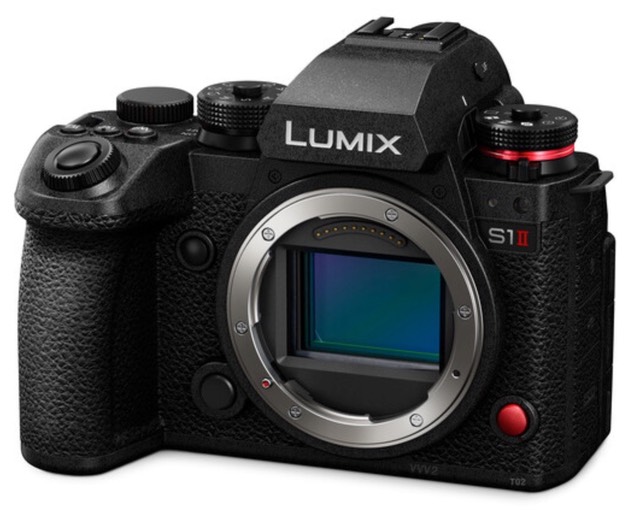
I've listed the original S1 and S1H as "older models" pretty much since the S5II appeared on the scene. They've been out of stock here in the US for quite some time. Now we have two new S1's, the S1II and the S1IIE. These new models are built on the same body size/style/controls as the original S1 models, but have some wrinkles inside (and a slightly different tilt/articulating LCD on the back).
The first problem everyone is going to have is that Panasonic isn't being consistent with naming policies across their line. In the original S1 pairing, the S1 was the base model and the S1H was the more video-centric. Now, the S1II is the more video-centric, and the added-letter S1IIE (E is apparently for Essential) is the more base model. The differences between the models are subtle, but important. The S1II uses a new 24mp stacked image sensor, while the S1E uses the older 24mp image sensor, which drives the performance differences.
One question I was trying to get answered is whether the S1II's stacked sensor was the same as the Nikon Z6III's. I believe it is, at least to a point. It appears that Panasonic is accessing it differently than Nikon does, and that could be because of small changes to the frame offload speeds, or it could be that Panasonic is just using different modes that were already built into that sensor. This difference shows up at 4K/120P, for example, where Panasonic is using a 1.17x crop and Nikon a 1.5x crop. There are differences in how the captured data maps to pixels as well as rolling shutter (the Nikon produces direct pixels and has a faster rolling shutter).
Little differences like this are important, because we have quite a few choices at 24mp full frame mirrorless now (including six from Panasonic!). The S1II seems to go up against the Nikon Z6III, but the S1II is US$3200 and the Z6III is US$2500 (often on sale at an even lower price). It's tough for Panasonic to make inroads against the big three here in the US, and specs, dealers, and price are now all issues Panasonic is fighting.
Nowhere in Panasonic's press releases or marketing information I've seen so far do they actually seem to know how to market their six different 24mp cameras (S1II, S1IIE, S5II, S5IIX, S9, and BS1H). In the S1IIE features list the sensor is listed as "inspired by the performance characteristics of the Lumix S5II," which tells you nothing. Those of us in the press these days are dealing with AI driven press releases, but I'm failing to even see the I in Panasonic's. Nothing tells me which 24mp camera to buy, let alone why I should buy it instead of Canon's, Nikon's, or Sony's. Update: Panasonic France has published an Instagram post that tells you which one to buy based upon your Zodiac sign (no, I'm not making that up). This feels like "stuff the channel and see if it sells" product management, not clear, user centric marketing.
I'm also going to once again call out Panasonic on a continued flaw in their strategy: Canon, Nikon, and Sony now all have a full line of still cameras that are video hybrids, as well as dedicated video cameras, both of which use the same mount. Canon has standardized on RF, Nikon/RED on Z, and Sony on FE. Panasonic's dedicated professional video line is still a strange mix of EF, B4, PL, the L box camera, and camcorder (built-in lens).
Maybe someone from Panasonic's US team will reach out to me and try to fully describe their "vision" here. After all, I live a short drive away from their HQ. But I suspect not, because I'm not sure they know.
Added Known End-of-Service Dates
Canon has published the last date that they'll service some discontinued products, so I've added pages in the appropriate "Older" database sections to reflect that:
Canon's Increasing APS-C Commitment
Why is Canon seemingly going all-in on APS-C (except for lenses, buzz, buzz)? Counting only "current models," with the recent R50V introduction we now have five full frame cameras (RF) and five crop-sensor ones (RF-S) from the Red logo crew. I'm told that Canon isn't done with APS-C yet, and we'll get at least one additional crop sensor camera announcement this year.
Meanwhile, Nikon is at six full frame cameras (FX) but only three crop-sensor ones (DX). Sony's current lineup consists of eight full frame cameras (FE) and four crop sensor ones (E), with two of the latter being six years old.
It's all about market share. Canon's stated goal is to keep 50% of the on-going camera market. You simply don't attain that level of market dominance without a plethora of products for the proletariat. Yes, US$1000 full frame mirrorless cameras have proven profitable to sell, but that happens at a lower margin than the camera companies desire. That's why those entry full frame models use old, established tech (image sensor, processor) , as the big R&D investments for that tech have already been diluted across a lot of product.
I'm pretty sure that the business dynamics today are still much as they were through the DSLR era: the image sensor and processor are the two most expensive components in a camera; full frame image sensors, even the older ones, are at least 3x the cost of an APS-C one. Remember, the rule of thumb is 3.5x the cost gets passed to the consumer, so that makes the actual change to the list price all the way up to 10.5x. Thus, if you want to have pricing and sales flexibility at the low end, you really want to be making APS-C cameras.
Curiously, I noted a change in Nikon management plans over the past year. Coming out of the pandemic their management plans were touting that they'd concentrate on higher-end prosumer/pro products. Lately, that same management has shifted to "support all generations of fans," a subtle way of saying that lower cost, lower capability products do have a place in their lineup. The recent Z50II at US$910 (body) is arguably the best of the bunch in its price class, so Nikon continues to try to find customers in the price-sensitive crowd.
All the camera companies are now looking more for future customers, too. The group that started in film SLRs, transitioned to DSLRs, and now is buying at the highest end of mirrorless is older and about to get smaller in size. You've seen the result in all the camera marketing materials lately: creators, influencers, and other euphemisms for "find a new, younger customer to hook and grow with."
It wasn't a coincidence that Canon introduced the R50V with the V1 here in the US. While CanonUSA's marketing team—which has been decimated several times now—wasn't able to get the message out, here it is in a nutshell: "We have cameras that appeal to those who want something more than their phone offers them. That starts with our new large sensor compact camera, the V1, which is targeted at creating videos and stills that stand out from the pack; to the also new R50V, which offers a step up into the world of interchangeable lenses with even more video and image capability; all the way to our long-established and respected RF mirrorless lineup that has models that range from entry level to top-of-the-line professional and even extends into Hollywood cinema. Start with us, and we'll have you covered as you grow into new needs and capabilities."
You don't get 50% market share by selling only the top kit (e.g. RF mirrorless). Indeed, the recent sales numbers I've seen is that both Nikon and Sony have basically cratered Canon's previous big lead in the pro market. For those of you with short memories (or who weren't born yet ;~), Canon's rush to huge success in film SLRs starting in 1990 was centered around a marketing campaign that told you that you could take action tennis photos just like a pro—or at least Andre Agassi—with this thing called Rebel.
So here's the challenge for Canon: where's the marketing campaign to go with the R50V? "Built for creators. Made for video." seems both me-to, as well as a bit displaced. "For the Stills Photographer" is a paragraph at the bottom of their product overview, almost as if they remember, oh, the camera can take stills, too. True creators produce both stills and video, even if they concentrate on video (curiously, Canon plays up vertical movies without mentioning TikTok or Reels or anything else that says that Canon understands what a creator does).
I've been pretty harsh on the camera companies for their poor marketing skills over the years. Confusingly, their marketing has gotten worse—far worse—to the point where today even the crudest AI could do a better job.
Okay, I couldn't resist. Here's ChatGPT's quick one-paragraph marketing pitch:
In today’s fast-paced content landscape, creators and influencers need a camera that keeps up with their vision—without the bulk or complexity of traditional DSLRs. Modern mirrorless cameras deliver stunning 4K video, crisp high-resolution photos, and lightning-fast autofocus in a sleek, lightweight package. With features like real-time eye tracking, wireless connectivity for instant sharing, and cinematic color profiles, they make pro-level content effortless. Whether you’re vlogging, streaming, or capturing the perfect Instagram shot, a mirrorless camera gives you the creative freedom and image quality that smartphones just can’t match. Upgrade your content—because your audience deserves the best.
Compare that to what the camera companies are saying. ChatGPT's language is more active voice, packed with a pretty full list of benefits. But check out that last line (Upgrade your content...). That's Madison Avenue Junior Executive level. Sure beats "Built for Creators. Made for video" doesn't it? ;~)
Aside: I wouldn't run with any AI -created content like this directly. It still needs a human hand and edit to bring it together, as ChatGPT did no-no things like mix generic (vlogging, streaming) with specific (Instagram), as well as a few other marketing no-nos. Still: better than CanonUSA did.
The bottom line is that it takes more than just some new product to win market share. I get a sense that there's some clearer strategy and planning going on in Canon HQ and R&D with regard to mirrorless (finally!). But I also get the sense that they don't know how to deliver the punch line.
Canon Adds A Camera to the RF Line
What happens when you take a Canon R50 and add a V? You get the EVF-less R50V with a host of small changes, mostly centered around video.
Several new video modes (slow shutter, slow/fast recording, log assist viewing, and a better stabilization for video) are the primary difference in function. The primary difference externally is, of course, the change in body style to a smaller, more creator-friendly one. Curiously, while the body slims down quite a bit in size, the weight remains close to the same.
Along with the body Canon announced the 14-30mm f/4-6.3 RF-S lens, which provides about a 23-48mm equivalent angle of view with Canon's 1.6x+ crop.
Like many cameras before it (Fujifilm X-M5, Nikon Z30, etc.), the R50V is an entry-level body, so body-only price is US$650, and the kit with the new lens is US$850.
Commentary: The camera companies continue to backfill the market that they left, basically the US$500-1000 compact camera. Most are doing it with an interchangeable lens camera with no viewfinder, just as Canon has now just done with the R50V.
I wrote that it was a mistake when the camera companies first started cancelling their compact lines, and it's clear that they've now figured that out. It's not easy pulling a young smartphone user all the way to a sophisticated mirrorless camera that costs US$1000 or more. There has to be an intermediary step where that potential customer sees that they get something beyond what their smartphone can do, but aren't spending money they're not making yet to get it. If you capture that first upgrade into dedicated cameras, you can start building a new long term customer base again.
The reason you need a new long term customer base is that the old one that started with film or instant cameras is slowly dying off (or retiring to things other than photography).
The CP+ Product Announcements (Updated Daily)
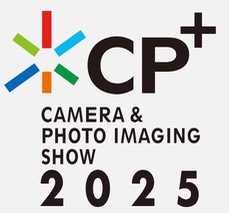
This page is a "living one" in that it will updated with new information as it becomes available. The latest products to be announced are at the top. Everything on this page was introduced prior to or at the CP+ trade show (February 27 to March 2), the largest photography show in Japan each year. (Should you understand Japanese, the online schedule of CP+ presentations is available here. OMDS and Sony have extensive online presentations planned. Nikon's presentations will be streamed via the Nikon CP+ site.)
Commentary on the below items is either in separate articles (e.g. OM-3) or at bottom of this page.
- Wrap-Up is on byThom
- Feb 27 — Just a note: a lot of these "displayed/announced" lenses don't yet have full details available. When they do, I'll add them to the relevant databases and update links. Particularly with the Asia lens makers, they tend to announce, later articulate details, and these don't get translated into English for a bit, as the Asian market is their primary target.
- Feb 27 — Sirui — three new Prime 1 cine lenses (RF, L, Z, FE)
- Feb 27 — DxO — PureRAW 5 announced (new noise reduction, better Fujifilm X-Trans support)
- Feb 27 — DxO — Photographer's Storm Cape (protective jacket for both photographer and gear)
- Feb 27 — Fujifilm — Maintenance firmware updates for X100VI, X-T5, X-T50, X-H2, X-H2S, X-M5, GFX100, GFX100S
- Feb 27 — Viltrox — 25mm f/1.7 Air (XF, Z, E), 35mm f/1.2 Lab (FE), 50mm f/2 (Z, FE), 85mm f/1.4 Pro (Z, FE)
- Feb 27 — Laowa — 35mm f/2.8 tilt/shift (RF, L, Z, FE, GFX, XCD), 15mm f/4.5 (RF, L, Z, E), 8-15mm f/2.8 fisheye (RF, L, Z, E), plus some cinema lenses
- Feb 27 — 7Artisans — 24mm f/1.8 (L, Z, FE), 35mm f/2.8, 25mm f/1.8, 35mm f/1.8, 50mm f/1.8 (last three APS-C)
- Feb 27 — Samyang (Schneider/Kreuznach) — displayed a 14-24mm f/2.8 lens for Sony FE
- Feb 27 — Monster LA-FZ1 prototype — Nikon screw-drive lens mount adapter
- Show now open
- Feb 26 — Sony — 16mm f/1.8G, 400-800mm f/6.3-8.0G — two new significant lenses for FE mount
- Feb 26 — Nikon Z6III and Z8 — new firmware with significant video updates
- Feb 25 — Voigtlander — 75mm f/1.8 manual focus lens (FE mount) with bokeh control ring
- Feb 25 — Zeiss — 50mm f/1.4 and 85mm f/1.4 Otus ML manual focus lenses (RF, Z, FE mounts)
- Feb 25 — Panasonic — S1RII full frame camera (44mp)
- Feb 25 — Voigtlander — 28mm f/2, 35mm f/1.2, 40mm f/1.2, and 50mm f/1.2 for Leica M-mount
- Feb 24 — Sigma — BF camera, 16-300mm f/3.5-6.7 OS Contemporary lens, 300-600mm f/4 OS Sports lens, discontinuation of DSLR lens development
- Feb 24 — Thypoch 75mm f/1.4 lens — Another small manual focus lens for the Leica M-mount
- Feb 19 — Canon Powershot V1 — not mirrorless, but this vlogging oriented camera takes on some mirrorless models.
- Feb 18 — Nikon Zf firmware update to include Nikon Imaging Cloud — not out yet, but pre-announced.
- Feb 14 — Voigtlander 35mm f/3.5 lens — A new, small, light manual focus lens for the Leica VM mount.
- Feb 14 — Tokina 11-18mm f/2.8 lens — A return of an autofocus wide-angle zoom lens, for the Fujifilm XF mount.
- Feb 12 — Nikon 28-135mm f/4 PZ lens — Nikon's first full frame video-targeted lens is a mid-range power zoom.
- Feb 6 — OMDS OM-3 — A retro-styled camera based upon the OM-1 Mark II.
- Feb 6 — OMDS 17mm f/1.8 lens — A weatherproof and new branding update of the original Olympus 17mm f/1.8 lens.
- Feb 6 — OMDS 25mm f/1.8 lens — A weatherproof and new branding update of the original Olympus 25mm f/1.8 lens.
- Feb 6 — OMDS 100-400mm f/5-6.3 lens — A weatherproof and new branding update of the original Olympus 100-400mm f/5-6.3 lens.
- Feb 6 — Nikon 35mm f/1.2 S lens — This is the third lens in Nikon's fast f/1.2 pro series of prime lenses.
We're now in the week where most of the CP+ related announcements occur, so if you're interested in the rumors/leaks prior to the actual announcements for the show, here's some of what we're tracking:
- Meike — 35mm f/1.8 Pro (unknown mounts, probably Z, FE), 85mm f/1.8 Pro (XF)
- MonsterAdapter — Nikon F-mount to Z-mount adapter (LA-FZ1) with screwdriver motor support
- Viltrox — 25mm f/1.7 Air (XF, Z, E), 35mm f/1.2 Lab (FE), 50mm f/2 (Z, FE), 85mm f/1.4 Pro (Z, FE)
As these and other products get announced, we'll update the database pages elsewhere on this site and the bullet lists on this page.
Commentary: Wednesday produced two very different sets of announcements. First, Sony extended their lens set to 78 lenses by introducing the 16mm f/1.8G and 400-800mm f/6.3-8G optics. This extends the G prime series to its widest focal length so far, plus pushes Sony's telephoto offerings higher, finally offering an 800mm choice without teleconverter. Both are reasonably priced lenses—the telephoto zoom is US$2900—so are likely to prove so popular that we'll quickly get into backorder situations with both. I'd say if you want one for spring/summer, you'd better get in line now. Meanwhile, Nikon continued its "improvement via firmware" progression with updates for the Z6III and Z8 that mostly help them work with the 28-135mm f/4 power zoom lens Nikon introduced earlier in the month. The big thing to note, though, is that the Z6III's video quality has improved, as Nikon has addressed the noise jitter that many of us found as we boosted ISO values.
Tuesday started with Panasonic and Zeiss announcements. From Panasonic we get a new S1RII body, replete with a new 44.3mp image sensor and a handheld 177mp pixel-shift capability. But much of the action here seems to focus on the video specs of the camera, which include 8K/30P, 6.4K open gate, and a bunch of other nice touches for a hybrid camera (e.g. 32-bit float audio). At US$3300, this body is taking on Sony A7R Mark V's and Nikon Z8's. This site's exclusive advertise, B&H, has a panel introduction/discussion of the S1RII scheduled for noon (ET) if you want to know more.
Zeiss, meanwhile, has risen from a deep sleep to introduce two new Otus lenses, this time for Canon RF, Nikon Z, and Sony FE full frame mirrorless cameras. As before, the new 50mm f/1.4 and 85mm f/1.4 Otus lenses are manual focus, though with completely new optical designs, some slimming/lightening, and (only ;~) US$2500 and US$3000 prices respectively.
Monday kicked off with Sigma being the big announcement maker. Surprisingly, we got a new L-mount camera, the bf which I see as basically a re-imagining of the original fp, as it uses the same 24mp image sensor and tries to be a simple, small unit. The difference this time is that Sigma has definitely doubled down on the "simple." Minimal controls, only a USB-C port, no card slot (230GB internal memory). We did get a new autofocus system, which the fp really needed. The camera grew slightly in width and depth and added a touch of weight, but it's still absolutely on the "small" side. Suffice it to say that the Sigma camera engineers are still marching to a different Taiko beat.
On the lens side, the 16-300mm f/3.5-6.7 OS lens eclipses the Tamron 18-300mm as the largest zoom ratio APS-C mirrorless lens. Available in Canon RF, Fujifilm XF, L-mount, and Sony E mounts at US$700 in April even has near macro-level capabilities (1:2 at 70mm). Not that I particularly am interested in it myself, but I have to wonder why Sigma is now embracing Canon RF and avoiding Nikon Z. I also have a question: why are crop sensor lenses being introduced in the L-mount? No crop-sensor L-mount camera is currently being produced.
The best of Sigma's announcements from my viewpoint is the US$6000 300-600mm f/4 OS, available in L-mount and Sony FE-mount. This is a big, ambitious lens that is going to make a lot of Sony Alpha owners have to make some choices about how they want to cover the longer telephoto focal lengths (Sigma already has a 500mm f/5.6 OS lens for the FE-mount). Coupled with Sony's expected 400-800mm f/6.3-8G lens announcement later this week, Alpha owners are finally getting a wide variety of choices for telephoto work, something that Nikon has concentrated on in the Z-mount (coupled with Tamron) for awhile now.
The 2025 Winter Lens Olympics
Lenses from all nations—okay, two nations—seem to be lining up to make this month's CP+ show in Japan into a slugfest of lens product announcements.
We've already had a few show up early: Nikon 35mm f/1.2 S, and the three OM repackages. But I'm now tracking lens announcements from at least eight other companies that are basically targeted at CP+ buzz, and I'm not sure the two companies I just mentioned are fully done.
CIPA reported about a 10% increase in lens sales for 2024 over 2023 (which was a flat year). Add to that the unknown number of Chinese lenses that also got sold during the year, and it's possible that the overall attach rate hit 2x during the year. (Attach rate is the number of lenses sold per body sold.)
Meanwhile, Tamron just reported that they expect to finish their fiscal year with more than 29% revenue growth, and have upped the number of new lenses they expect to produce each year from the old five/year to double that at ten/year.
What's driving this lens surge? Probably this:
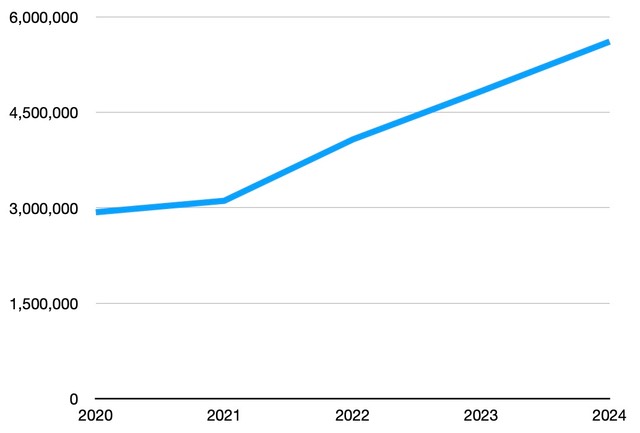
That's the CIPA unit volume for mirrorless bodies from the low it hit in 2020 (pandemic related) to the present. If you map DSLR body sales against that you get:
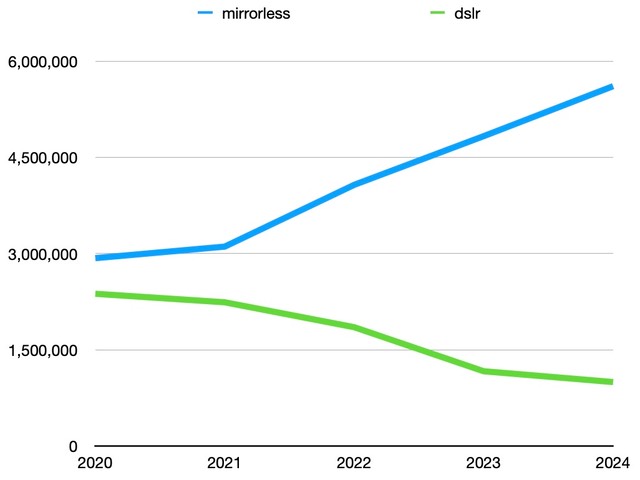
Mirrorless grabbed the primary market share for ILC in 2020—DSLR still had the majority of sales in 2019—and as many of these cameras are now going to people who either (a) didn't have a DSLR or (b) had a DSLR but need to build a new mirrorless system, we're seeing strong lens demand.
I'm not predicting that mirrorless will continue with that upward slope in terms of sales. At the point where DSLR sales near zero, I expect the ILC market—which would be almost all mirrorless—to plateau. Moreover, it's starting to be clear that people who buy bodies such as the Canon R1/R5, Nikon Z8/Z9, Sony A7R/A9/A1 are more difficult to get to upgrade. That same problem will likely hit the next generation of mid-level bodies, too (e.g. Canon R6III, Nikon Z6III, and Sony A7V users will prove tougher to upsell).
So enjoy the lens parade that's about to happen in Yokohama. It's going to be interesting to see the Japanese reaction to having more than a few Chinese lenses launched at a Japanese trade show.
The OM-3 Is Announced
OM Digital Solutions today announced the OM-3, a camera that takes the spot between the OM-1 and the OM-5. In essence, the OM-3 is mostly the OM-1 internals and capabilities inside a new gripless body, because, you know, retro. OMDS uses the word "timeless design" to suggest a style link to the past, and doesn't actually refer to function, so not exactly retro. There appears to be no significant new features or abilities, with the impression that it's OM-1 electronics in a new body. One difference that isn't getting mentioned is that the EVF has been downgraded to 2.36m dot (from 5.76), the eyepoint has increased, and that the OM-3 is not dual slot. I found a few other small differences from the OM-1 Mark II, as well, but mostly things that looked more like firmware updating than functional differences.
Again, the OM-3 is a camera slotted between between two existing ones, so that tends to restrict what is done, otherwise the new body might hurt sales of the existing ones. That said, if you can handle a flat front body, the OM-3 is pretty much an OM-1 at a lower price (US$2000 versus US$2400, though the OM-1 Mark II is currently on sale for...wait for it...US$2000).
Along with the OM-3, OMDS also announced redesigns of the 17mm f/1.8, 25mm f/1.8, and 100-400mm f/5-6.3 IS. These redesigns don't change the optics, but do add weather sealing in modern OM-clad housings.
________________
Commentary: Here's a puzzle: how do you create a "retro design" camera when your modern cameras are not all that removed from what you originally did?
When I first heard the rumors that OM Digital Solutions was going to make a retro camera, my first thought was "don't they already make those?" The OM-5 in panda cladding looks an awful lot like an old film SLR. It's really just the back (screen and controls) that screams "digital," and I'm not sure how you avoid a screen and additional controls for a digital camera. (Yes, I know there are a couple of examples of that, but they don't strike me as fully usable, general purpose cameras.)
Interestingly, Olympus seems to be using the 1972 OM-1 film SLR as its target for aesthetic design. Too bad they missed the 50th anniversary ;~). Just saying you're doing "retro" is no longer really a big thing, and not much of a marketing message. OMDS made a big mistake in not doing using that 50th anniversary, where they could have built a fuller, more compelling story behind the marketing efforts. "It's the 53rd anniversary" doesn't have much of a ring to it, after all.
Yes, I'm a contrarian when it comes to so-called retro designs. I have been since the Nikon Df, and later Fujifilm and Nikon models. There's a reason why camera user interfaces modernized: you can control more, and do so more quickly. The so-called "dials interface" retro cameras, with dedicated ISO, shutter speed, and aperture dials, tend to force you to work more slowly, They also usually leave off all the step savers and shortcuts to the more complex interactions you'll need to make with the camera at some point.
Sure, three dials make the camera more simple in one aspect (exposure). But really, is that the thing you need so much control over these days? Dials are bit like a comfort blanket for those that learned how to photograph 50 years ago. To the young, they're a fad complication that will pass soon.
But the OM-3 doesn't even have those dials. Instead we have the more modern Mode dial, plus the digital Pen's front style "creative" dial. Moreover, the original film-based OM-1, while it did have dials, had two of them at the lens mount (shutter speed on the camera side of the mount, aperture on the lens side), which was itself a bit of a modernization (for smaller lenses with the camera held normally it moved the control of those two parameters to the fingers of the left hand without moving the hand).
In essence, OMDS is doing a strange thing with this new model, squeezing the current OM-1 innards into a changed and slightly simplified body and trying to wedge that between the OM-1 and OM-5. I'm not sure that there's room there for that. Moreover, the body that needs some love is the E-M10, which still hasn't had it's OMization. Still, perhaps the "newness" of the "timelessness" may trigger some additional buying by a few. I'm unconvinced as to why I'd want the OM-3 over the OM-1 Mark II, though.
Then there's this: in producing the OM-3 they've taken the hand grip off because, well, old film SLRs didn't have one and they're trying to make this look like a film SLR. Handgrips, even the modest one on the OM-5, are useful, though. So what we have OMDS doing here is removing or redesigning useful things just for looks.
Meanwhile, the three "new" lenses are really old optical designs in new housings, something they were committed to having to do in the process of moving from Olympus branding to OM branding.
It feels to me like Olympus got stuck in a museum with the OMDS transfer. The preservation efforts continue, but it doesn't seem like innovation is in the building any more. This marks the second year in a row we've gotten essentially a no update update.
Leica Announces the SL3-S
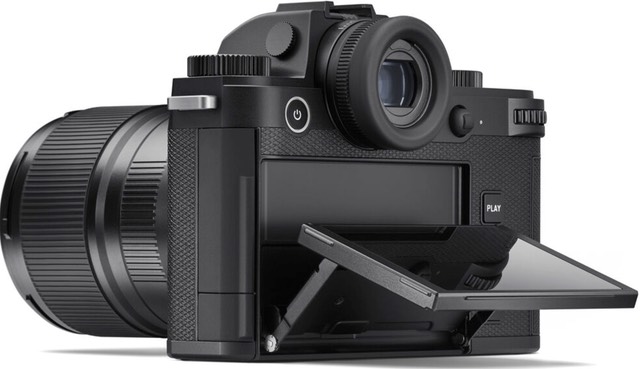
Leica's third 24mp SL camera, the SL3-S, comes with a number of additions, as well as a slightly higher price tag (now US$5300). Phase detect autofocus, 6K video, open gate video, a tilting rear LCD, Content Authenticity Initiative support, 30 fps still photography (12-bit), handheld 48/96mp multi-image capability, direct-to-SSD recording (video), and addition of a CFexpress Type B slot, are the big ticket updates to the camera. All coupled with the modern Q UI in the solid metal SL body design.
Commentary: It feels like Leica has now made it up to at least 2020 in the full frame sensor hybrid camera market. They tout it as the "fastest Leica" ever, and it certainly has the best video capabilities Leica has done to date, but that feels more like "catching up" than it does "getting ahead."
Some will see that as a snide comment from me, but it's actually a compliment. Generally Leica had not been keeping up with the Canikony trio, but they can now fully claim some reasonable level of doing so. At least for the 24mp full frame hybrid category.
There's a reason why Leica is doing well at the moment (last year was their best year financially). The SL's keep them close to the ILC state of the art, the M's appeal to their traditional users, and the Q/Dlux compacts actually are the top of that smaller category. Instead of going retro, as have so many of the Japanese, Leica is going more modern, and that shows, too. Moreover, it's the right decision for the future.
The SL3-S isn't a camera I'm likely to fully test, so I can't tell you exactly how it competes with the Canikony hybrids. But that modern UI does one thing: it simplifies the user's interaction with the camera, and up to a point I think that's valuable. I actually enjoy using my DLux-8 compact, and will have a review of it on the main bythom.com site soonish.
Who’s Made the Most Mirrorless Cameras?
In going through the individual camera pages of this site during my site cleanup, I kept track of how many models each of the makers had created in the short life (2009 to present) of mirrorless cameras.
Think you know how many cameras that was and who has made the most models?
Okay, get out a piece of paper and write down your total and the top three mirrorless camera creators.
Now scroll down to see if you’re right…
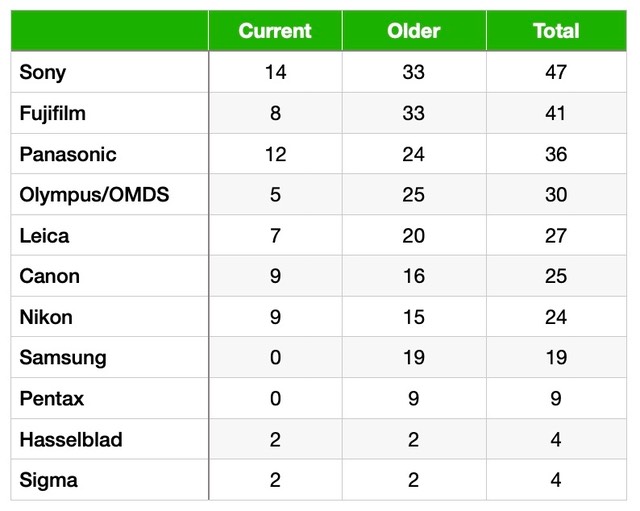
Clearly, the first movers (Panasonic, Olympus, and Sony, in that order) had an advantage. Canon's and Nikon’s late moves—even considering their now discontinued earlier entries (M and 1 respectively)—put them more towards the back of the pack still active in terms of overall mirrorless camera models.
A slightly surprising statistic is that we’ve had a grand total of 266 different mirrorless models produced, but 68 of those are "current" models. Note that I’m aggressive in moving models from “current” to “older” status, even though some of the camera makers will continue to sell overbuilt inventory of an older model when they introduce a replacement. Therefore, there’s probably 80 to 90 “new” models you can buy right now. Both numbers seem high given that the overall sales volume is just over the 5m unit mark each year. Quite a few models must be selling in the low tens of thousands of units a year worldwide.
Note: I haven’t counted the dedicated video mirrorless models, only the ones that I’d consider hybrids or stills-oriented. Pentax includes some discontinued Ricoh models in the Older column.
In the last five years we’ve seen 22, 14, 16, 17, and 14 new models introduced, so the still available current models are basically equivalent to the new camera model introductions of the past four-and-a-half years.
Oddly, Panasonic is probably fifth in global market share of mirrorless cameras, but at the moment has one of the highest current model counts (though they're not available in every region). I suspect that will change soon, as it doesn’t seem sustainable.
